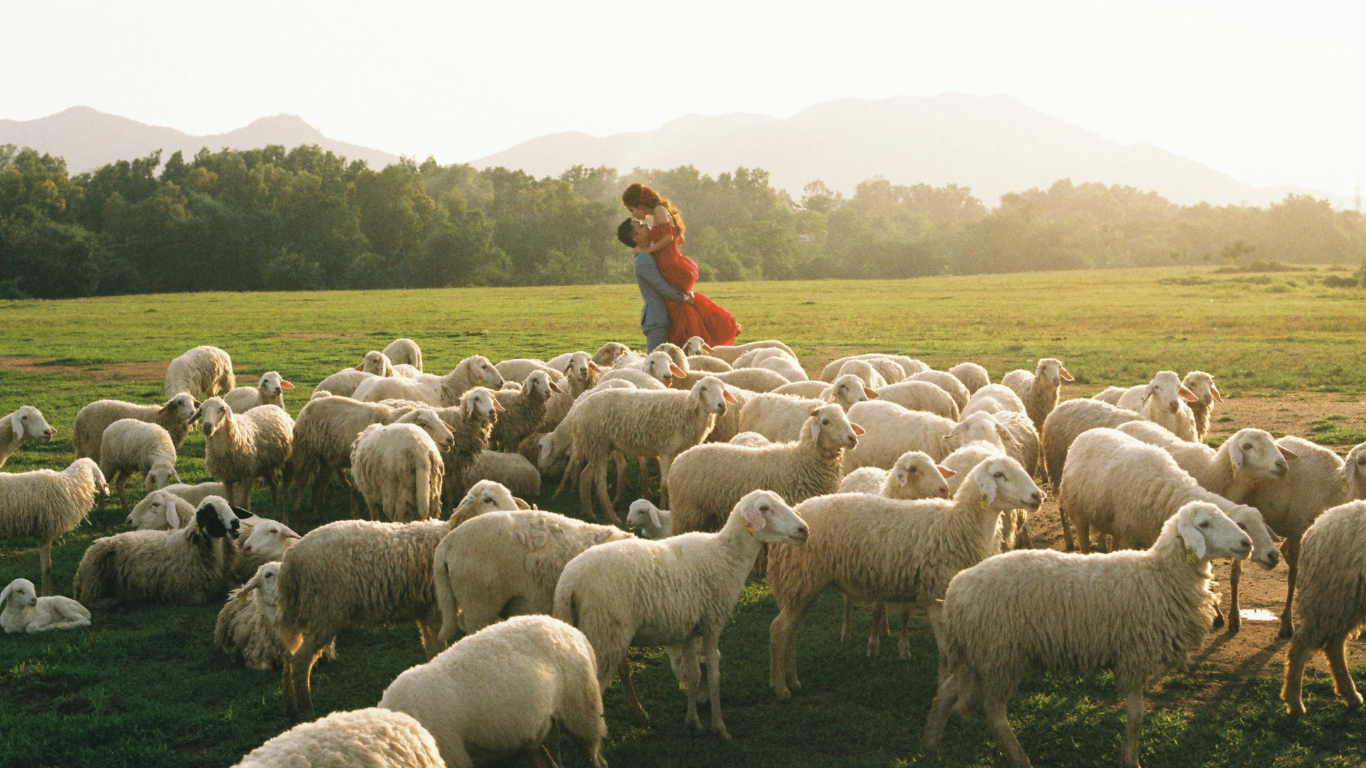Every October, a quiet but delightful day slips onto the calendar. National Sheep Hug Day invites everyone to pause, find a woolly friend, and give a gentle squeeze. No fancy gifts, no loud parties, just a moment of warmth between people and sheep. It sounds simple, almost silly, but that’s the charm. Let’s explore where this sweet idea came from, why sheep deserve the spotlight, and how you can join in.
The Birth of a Woolly Holiday
The story starts in 1992 with a woman named Carol Boltz from Indiana. Carol worked at a living history farm where sheep were part of daily life. She noticed how visitors lit up when they touched the soft fleece or heard a lamb bleat. One day she thought, why not give sheep their own special day?
She picked the last Saturday in October, right in the heart of fall when wool feels extra comforting. Carol spread the word through farm newsletters and local papers. At first, only a handful of farms joined in. But word traveled. By the late 1990s, schools, 4-H clubs, and even city petting zoos were hosting hug events. No big company or government declared it official; it grew from one person’s love for sheep.
Why Sheep Need Hugs Too
Sheep often get overlooked. Cows give milk, chickens lay eggs, pigs become bacon. Sheep quietly provide wool for sweaters, lanolin for lotion, and meat for some tables. Yet they rarely get the cuddles dogs or cats enjoy.
A gentle hug calms a sheep and the person doing the hugging. Studies show stroking animals lowers heart rates and stress. Sheep have soft, springy fleece that feels like a living blanket. Their calm nature makes them perfect for a quick embrace. Plus, lambs are born with big eyes and wobbly legs; it’s hard not to smile.
Farmers say well-handled sheep are easier to shear and move. Early, kind contact teaches them people are friends. So a hug isn’t just cute; it’s practical.
How Farms Celebrate the Day
On the big Saturday, small farms open gates for visitors. Kids line up to wrap arms around patient ewes. Farmers hand out wool samples and explain how fleece becomes yarn. Some set up photo booths with hay bales and plaid blankets.
In New Zealand, where sheep outnumber people, ranches host “hug a sheep” contests. The goal is gentle, safe contact; no wrestling. In the UK, wool festivals add hug stations alongside spinning demos. Even city zoos bring in a few sheep for urban kids to meet.
Many events include sheepdog demos, lamb bottle-feeding, and craft tables where you spin wool on a drop spindle. The day stays relaxed; loud noises scare sheep, so music is soft or absent.
Fun Ways to Join from Anywhere
You don’t need a farm to take part. Knit with wool yarn and thank the sheep silently. Visit a local fiber festival or farmers market selling handmade scarves. Watch a livestream from a sheep cam; some farms set them up just for the day.
If you know a shepherd, send a thank-you card. Share a photo of your wool socks with the hashtag #HugASheepDay. Schools sometimes invite therapy sheep for story time. Libraries read books like Sheep in a Jeep and let kids hug stuffed lambs.
One teacher in Ohio sets up a “hug a stuffed sheep” corner and donates the toys to a children’s hospital afterward. Every hug counts, real or plush.
Sheep Facts to Share While Hugging
A single sheep can grow eight pounds of wool a year, enough for four sweaters. Merino wool is softer than cashmere. Sheep recognize up to fifty human faces for years. They wag their tails like dogs when happy.
Lambs bounce in groups, a move called “pronking.” Sheep prefer to face uphill when resting; it helps them spot danger. Their rectangular pupils give nearly 360-degree vision. No wonder they stay calm during hugs; they see you coming from every angle.
Wool insulates in heat and cold, wicking moisture away. Ancient shepherds in Mesopotamia herded sheep 7,000 years ago. The animals shaped language too; “flock,” “wool-gathering,” even “black sheep.”
Keeping the Day Kind and Safe
Not every sheep loves hugs. Some are shy or skittish. Always ask the farmer first. Approach slowly, let the sheep sniff your hand, and hug from the side, never the face. Keep hugs short; sheep overheat in thick fleece.
Wash hands after; barns carry germs. Skip perfume; strong smells bother sensitive noses. Pregnant women should avoid lambing areas to prevent rare infections. Kids need adult supervision to avoid pulling wool or ears.
Farms often post signs: “Hug gently, speak softly, leave treats at home.” Candy confuses sheep and can make them sick.
Why the Day Matters Now
In a rushed world, National Sheep Hug Day reminds us to slow down. It connects city and country, young and old. Wool supports small farms struggling against cheap synthetics. Every hug raises awareness about sustainable fiber.
The holiday stays pure; no big ads, no mandatory spending. It’s a pocket of kindness in a noisy calendar. One squeeze, one smile, one shared moment with a gentle creature. That’s all it asks.
FAQ
Q: When is National Sheep Hug Day?
A: The last Saturday in October each year.
Q: Do I need a real sheep to celebrate?
A: No. Knit with wool, visit a farm, or hug a stuffed sheep toy.
Q: Are sheep hugs safe for kids?
A: Yes, with adult help and calm sheep. Always ask the farmer.
Q: Where did the day start?
A: An Indiana farm worker named Carol Boltz created it in 1992.
Q: Can I hug wild sheep?
A: Never. Wild sheep are not tame and may run or butt.




